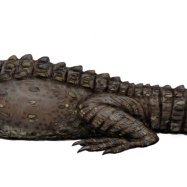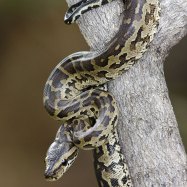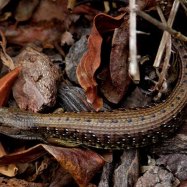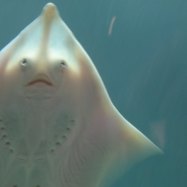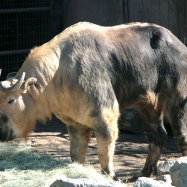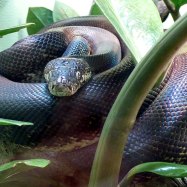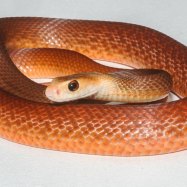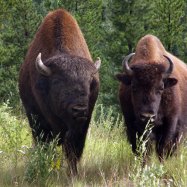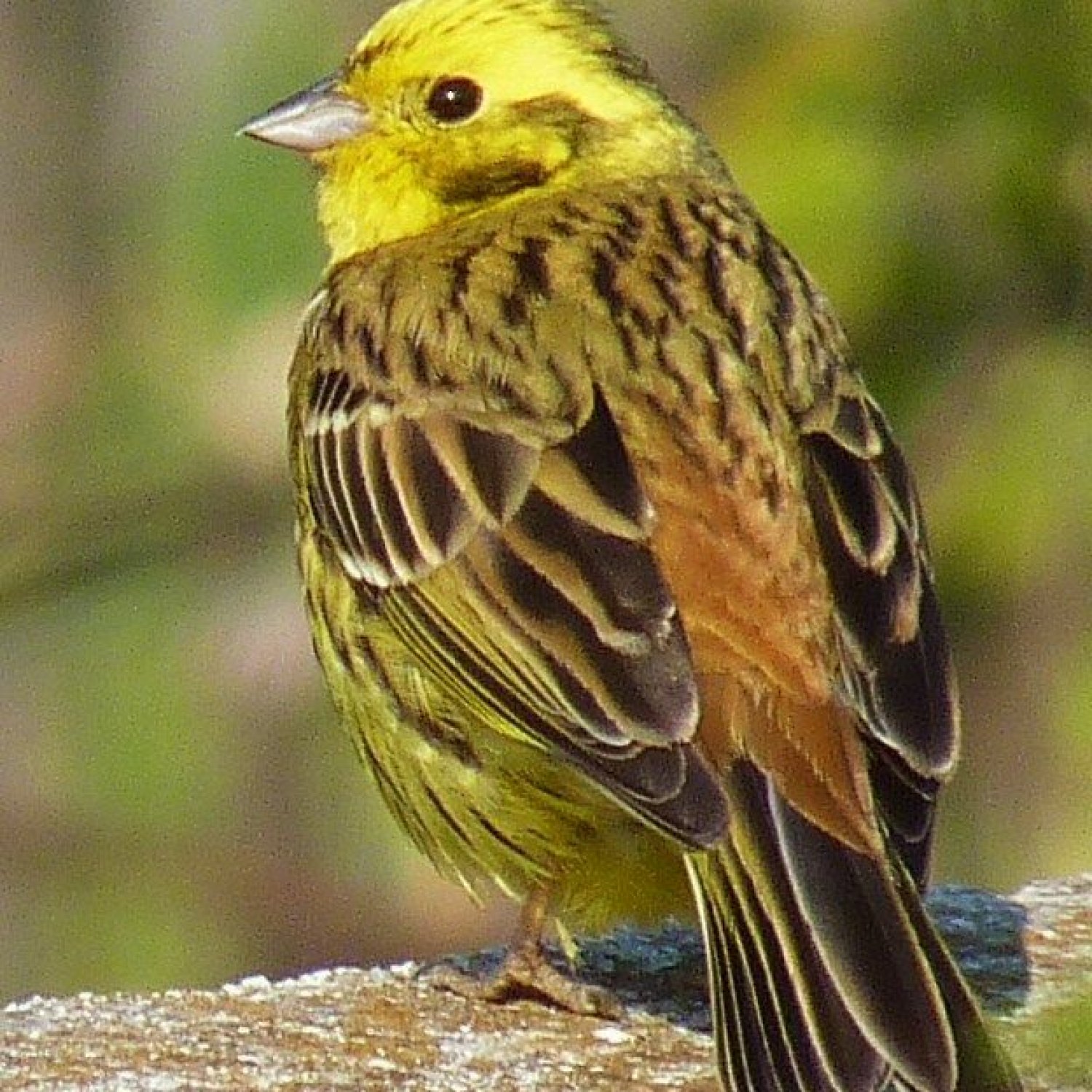
Yellow Hammer
16 - 17 cm
Looking for a vibrant addition to your backyard birdwatching sessions? Look no further than the Yellow Hammer! This small, stocky bird can be found across the globe and belongs to the Emberizidae family. With a length of 16-17 cm, it's easy to spot with its bright yellow hue. Don't miss out on the opportunity to see this beautiful creature in its natural habitat. #YellowHammer #Birdwatching #Emberizidae
Animal Details Summary:
Common Name: Yellow Hammer
Kingdom: Animalia
Habitat: Grasslands, farmland, hedgerows
The Majestic Yellow Hammer: A Small Bird with a Big Presence
When one thinks of birds, the majestic eagle or the graceful swan may come to mind. But among the vast array of avian species, the Yellow Hammer stands out with its vibrant colors and enigmatic presence. This small, stocky bird may not seem like much at first glance, but it is truly a remarkable creature with a wide range of impressive features.Scientifically known as Emberiza citrinella, the Yellow Hammer belongs to the kingdom Animalia and phylum Chordata, placing it in the same category as familiar creatures like mammals and reptiles Yellow Hammer. However, this feathered friend falls into the class Aves, making it a unique and fascinating bird.
With its distinctive yellow, brown, and black coloration, the Yellow Hammer is easily recognizable. This has earned it its common name, as well as other monikers such as "yellow bunting" or "yellow yorling." Its brightly colored feathers also serve as a visual representation of its playful nature and lively personality.
Yellow Hammers are a part of the order Passeriformes, also known as "perching birds." This order includes over half of all bird species and is the largest group of birds in the world. Within this vast order, the Yellow Hammer belongs to the family Emberizidae, also known as the "buntings." These birds are known for their strong, conical bills, which they use to crack open seeds and forage for food.
Feasting on a Variety of Foods
Speaking of foraging, the Yellow Hammer is an omnivorous bird, meaning it feeds on both plants and animals Yellow Jacket. It has a diverse diet that includes insects, seeds, grains, fruits, and even small invertebrates. This flexible feeding habit makes the Yellow Hammer well-adapted to a variety of habitats, making it a widely distributed species.Love and Nesting
While the Yellow Hammer's bright colors may be eye-catching, it is during the breeding season that these birds truly shine. As the weather gets warmer, male Yellow Hammers start to sing their vibrant songs to attract females. Their melodious voices and energetic displays are sure to capture the attention of any potential mates.Once a pair is formed, the female will choose a nesting site and construct a well-hidden nest made of grass and twigs. Yellow Hammers are known for their secretive nature, and they prefer secluded areas such as hedgerows or dense foliage to build their nests. They are also territorial and will fiercely defend their nesting site from any intruders.
After the eggs are laid, both parents take turns incubating them for about two weeks. Once hatched, the chicks are fed a diet of insects until they are old enough to join their parents in foraging for food.
A Habitat for Everyone
The Yellow Hammer's wide geographical distribution covers Europe, Asia, and North Africa, making it a familiar sight in many countries. It is a resident species in most of its range, meaning it does not migrate and can be found in the same area year-round. This makes the Yellow Hammer a reliable and comforting presence for many people, especially those living in rural areas.While they are not picky about their habitats, Yellow Hammers have a preference for open grasslands and farmland. They are also commonly found in hedgerows, making use of the thick vegetation to hide from predators and build their nests.
Their adaptability to different environments has made the Yellow Hammer a common sight in both urban and rural areas. They can often be found in parks and gardens, foraging for food or singing their beautiful songs.
A Small But Mighty Bird
At just 16-17 cm in length and weighing only 18-24 g, the Yellow Hammer may seem like a small and unassuming bird. But do not be fooled by its size, as this little bird is mighty in many aspects.Their small size allows them to swiftly maneuver between blades of grass and branches, making them quick and agile in flight. They also have a powerful beak that can crack open even the toughest of seeds, showing off their incredible strength.
The Importance of the Yellow Hammer
Aside from being a beautiful and intriguing bird, the Yellow Hammer also plays a vital role in its ecosystem. As an omnivorous species, they contribute to the pollination of plants and the control of insect populations. Additionally, their distinct habitats, such as grasslands and hedgerows, provide essential biodiversity and support other creatures, such as bees, butterflies, and small mammals.The Yellow Hammer is also a good indicator of the health of the environment. Changes in its population or behavior can signal shifts in the ecosystem and can help to identify and address potential issues.
A Global Presence
The Yellow Hammer may have originated in Europe, but it has since spread to many different countries, earning a global presence. It can now be found in various regions worldwide, including New Zealand, Australia, and even the United States.In the United States, the Yellow Hammer was introduced in the 1800s and can now be found in states such as California, Oregon, and New York. While they are not native to North America, they add a touch of color and diversity to the avian population in these areas.
Protecting the Yellow Hammer
While the Yellow Hammer is not classified as an endangered species, its population has declined in recent years due to habitat loss and intensification of farming practices. They are also at risk due to pesticide use, which can affect their food sources and be passed on directly to the birds.Conservation efforts are in place to protect the habitats of Yellow Hammers and increase their population. Various organizations work to promote sustainable farming practices and preserve the grasslands and hedgerows that these birds call home.
In Conclusion
The Yellow Hammer may not be a bird that immediately comes to mind when one thinks of avian species. But with its vibrant colors, flexible feeding habits, and intriguing behaviors, it is a bird that has captured the hearts of many. Its wide geographical distribution and diverse habitats make it a familiar and important part of many ecosystems worldwide.As we continue to make efforts to protect and preserve the environment, let us also remember to appreciate and admire the small yet mighty Yellow Hammer, a small bird with a big presence. Let us ensure that future generations can also experience the joy of seeing this beautiful species in their natural habitats.

Yellow Hammer
Animal Details Yellow Hammer - Scientific Name: Emberiza citrinella
- Category: Animals Y
- Scientific Name: Emberiza citrinella
- Common Name: Yellow Hammer
- Kingdom: Animalia
- Phylum: Chordata
- Class: Aves
- Order: Passeriformes
- Family: Emberizidae
- Habitat: Grasslands, farmland, hedgerows
- Feeding Method: Omnivorous
- Geographical Distribution: Europe, Asia, North Africa
- Country of Origin: Various
- Location: Wide range globally
- Animal Coloration: Yellow, brown, black
- Body Shape: Small, stocky bird
- Length: 16 - 17 cm
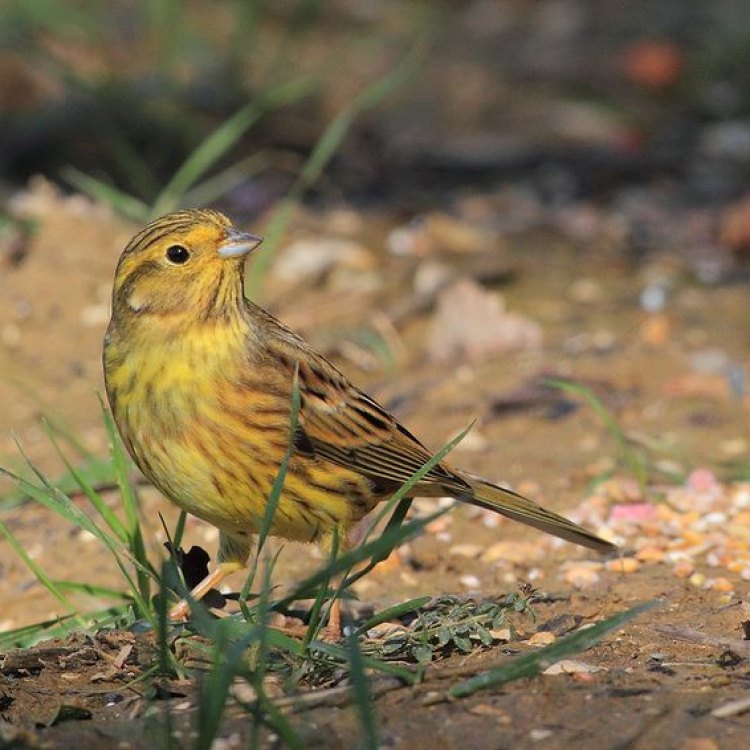
Yellow Hammer
- Adult Size: Small
- Average Lifespan: 3 - 5 years
- Reproduction: Sexual
- Reproductive Behavior: Monogamous
- Sound or Call: Distinctive 'a little bit of bread and no cheese' song
- Migration Pattern: Migratory
- Social Groups: Colonial
- Behavior: Ground-dwelling, often forages on the ground
- Threats: Habitat loss, agricultural intensification
- Conservation Status: Least Concern (IUCN)
- Impact on Ecosystem: Seed dispersal
- Human Use: Game bird, agricultural pest control
- Distinctive Features: Bright yellow plumage, black mask on the head
- Interesting Facts: The yellow hammer is the national bird of Germany
- Predator: Birds of prey, mammals
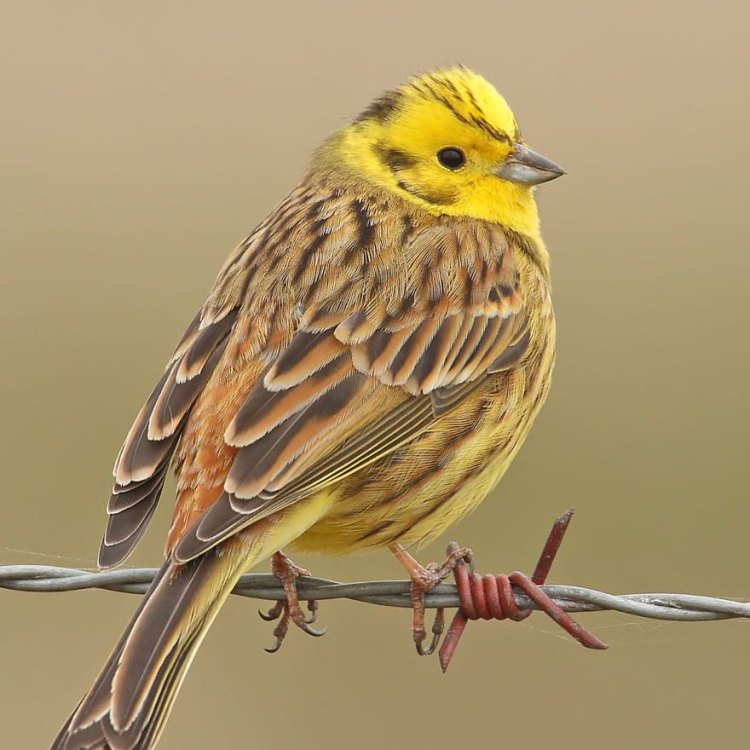
Emberiza citrinella
The Unique Features of the Yellow Hammer: A Small but Mighty Bird
When we think of colorful and majestic birds, we often imagine large and exotic species such as the peacock or the toucan. However, there is one small bird that stands out with its vibrant plumage and distinctive call – the Yellow Hammer.The Yellow Hammer (Emberiza citrinella) is a passerine bird native to Europe, Asia, and North Africa. It belongs to the bunting family and is also known as the yellow bunting or the yellow-hammer bunting PeaceOfAnimals.Com. Despite its small size, this bird has an abundance of unique features that make it stand out among its larger and more well-known avian counterparts.
Adult Size and Average Lifespan
The Yellow Hammer is a relatively small bird, measuring around 16 centimeters in length with a wingspan of 24-29 centimeters. It weighs around 30 grams, making it comparable in size to a House Sparrow. However, its size does not reflect its strength and resilience. These birds are known to travel long distances during migration, sometimes covering up to 500 kilometers in a single day.
In the wild, Yellow Hammers have an average lifespan of 3-5 years. However, they can live up to 8 years in captivity. The primary causes of death for these birds are predation and human activities such as hunting and habitat destruction.
Reproduction and Behavior
Yellow Hammers are monogamous birds, meaning they mate for life Yellow Spotted Lizard. Their breeding season usually begins in April and lasts until August. During this time, the male birds display a range of courtship behaviors to attract their female counterparts. They perform elaborate territorial flights and sing their distinctive 'a little bit of bread and no cheese' song to establish dominance and attract a mate.
Once a pair has formed, they build a nest together on the ground or in low shrubs and trees. The female incubates the eggs, which usually range from 3-5 in number, while the male provides food and defends the territory. After the eggs hatch, both parents take turns caring for the chicks.
Migration and Social Groups
Yellow Hammers are migratory birds, meaning they travel to warmer regions during the winter months. They usually begin their journey in September and return to their breeding grounds in March. These birds are highly social and form large flocks during migration. They also live in colonies, with multiple pairs nesting in close proximity to one another.
Behaviour and Threats
As ground-dwelling birds, Yellow Hammers spend most of their time foraging on the ground for seeds, insects, and small invertebrates. They are also known to feed on grains and are considered pests in some areas where they cause damage to agricultural crops.
However, despite their resilience and adaptable behavior, Yellow Hammers face a range of threats that impact their population. Habitat loss due to land-use change, such as the conversion of grasslands to farmlands, is one of the major threats faced by these birds. Other factors include the intensification of agriculture, which reduces their food sources, and the use of pesticides, which can be harmful to their health.
Conservation Status and Impact on Ecosystem
According to the International Union for Conservation of Nature (IUCN), the global population of Yellow Hammers is stable, and the species is listed as "least concern". However, there are local declines in some regions, and the IUCN recommends monitoring and preserving suitable habitats to ensure the species' long-term survival.
One crucial role that Yellow Hammers play in the ecosystem is seed dispersal. As they forage and feed on various seeds, they also help in plant pollination by spreading seeds through their droppings. This process is crucial for maintaining a healthy and diverse ecosystem.
Human Use and Distinctive Features
Humans have had a long history of interacting with Yellow Hammers. In some countries, such as Germany, these birds are hunted for game meat. They are also used for agricultural purposes, as their diet includes pest insects that can damage crops.
However, perhaps the most distinctive feature of Yellow Hammers that has caught humans' attention is their bright yellow plumage and striking black mask. This unique coloration has led to the bird being adopted as the national bird of Germany. The German name for the bird, "Goldammer," literally translates to "gold-hammer," further emphasizing its importance in the country's culture.
Predators and Interesting Facts
Like many birds, Yellow Hammers have a range of predators, including birds of prey such as hawks, falcons, and owls, as well as mammals like cats and foxes. However, these birds have developed various defensive behaviors, such as hiding in tall grass or making alarm calls, to protect themselves from predators.
In addition to being the national bird of Germany, the Yellow Hammer has a range of other interesting facts. For example, it appears on the covers of several books by popular British writer J.R.R. Tolkien, who was known for his love for nature and used these birds as inspiration for characters in his famous works. In addition, Yellow Hammers are also known to mimic the songs of other birds, making it more challenging for predators to locate them.
Conclusion
In conclusion, the Yellow Hammer may be a small and unassuming bird, but it has an impressive array of unique features that make it stand out in the avian world. From its bright colors and distinctive call to its monogamous behavior and role in seed dispersal, these birds have caught the attention of humans and contributed to maintaining a healthy ecosystem. However, to ensure their continued existence, it is crucial that we take steps to protect their habitats and conserve their populations, allowing these small but mighty birds to thrive in their natural environment.
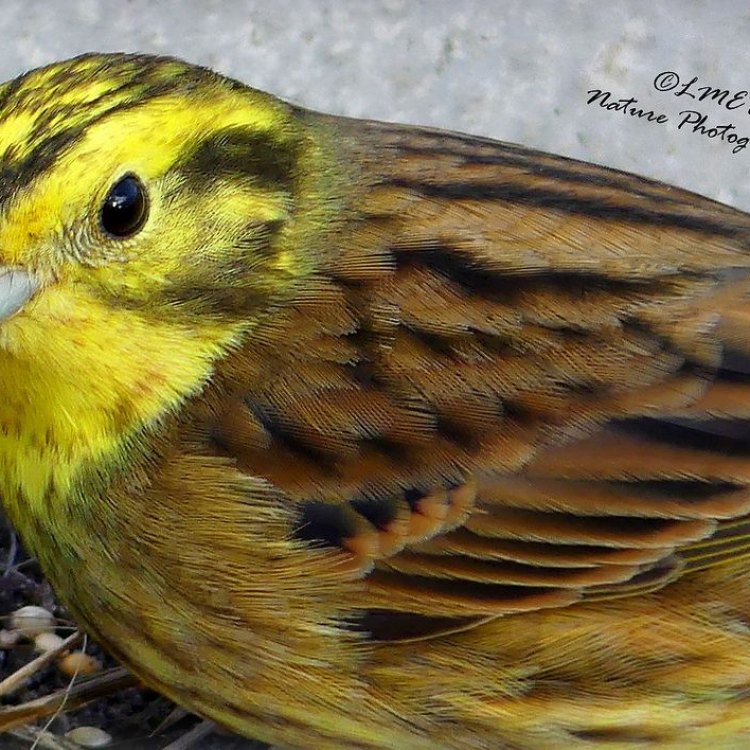
The Majestic Yellow Hammer: A Small Bird with a Big Presence
Disclaimer: The content provided is for informational purposes only. We cannot guarantee the accuracy of the information on this page 100%. All information provided here may change without prior notice.


